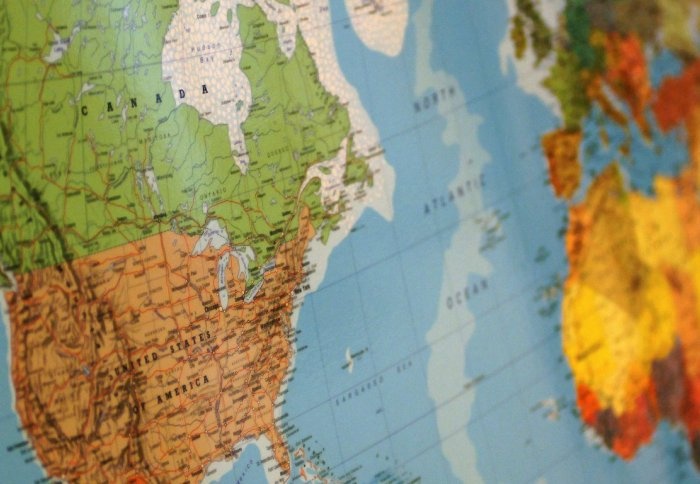World trade dominated by "broker" countries, according to research
By By Colin Smith, Imperial College London | 05 May 2014
Computer scientists have shown how Germany uses its power to dominate trade between smaller countries in the European Union, using a new method.
 A team from Imperial College London has designed a new computational model to investigate how networks work.
A team from Imperial College London has designed a new computational model to investigate how networks work.
The researchers have demonstrated its potential by using data from the World Trade Organisation and the United Nations COMTRADE database to analyse the complex trading networks between countries.
They determined whether countries were ''brokers'', which have extensive trade partnerships with other nations, or ''peripherals'', which are forced to rely on brokers to trade, locking them into economic dependency.
Their analysis shows how Germany is the largest brokerage power in the European Union (EU), becoming the biggest broker since its re-unification in 1991. New members to the EU such as Poland become more peripheral as they join the EU, overwhelmingly trading with Germany.
Having to sever all existing trading agreements with other non-EU members as a requirement of joining the EU, while waiting for the perceived positive effects of accession to materialise, is a reason why newer members become peripheral in the world trade and are more dependent on Germany, suggest the researchers.
Dr Nataša Prulj, Department of Computing at Imperial, says, ''Our method has helped us to more accurately compare how nations are doing in terms of trade. Using our model, we can clearly see that Germany is the winner when it comes to trade as it is at the centre of a vast network in Europe, which is making it powerful and very rich. We can also see how this trade bonanza is not trickling through to newer members who are losing out due to Germany's dominant position. This may be sobering news for countries that are hoping to join the EU as a way of improving their trading links.''
Using their model, the researchers were also able to compare the rise of countries to broker status and a decline in the status of others around the world. For example, they tracked China's emergence from the periphery to becoming a global broker. This rise started in the early 1970s with President Nixon's international legitimization of the country. Later, trade took off after China's accession to the World Trade Organization in 2001. The country then surpassed the USA to become the world's biggest broker by 2010. This process enabled the country to rapidly expand and enmesh itself in global trade.
In recent years, the status of the US as the world's largest broker nation has been diminished, according to the research. The country's broker rating dropped during the 1980s. This was during the Regan Administration, when a mix of monetary policy and loose budgets caused the dollar to sky-rocket, which affected the trade balance. The drop in the export power of the USA meant that its trading network was reduced, impacting on its broker status in favour of China's.
The team were also able to show the decline of Britain's once dominant trade network. Its broker status and subsequently its trading links were diminished since the loss of its Empire in the 1960s. The research showed how its broker status slowly improved in 1973, when the Conservative Prime Minister Edward Heath led the country into the EU. However, the downward trend towards the periphery has continued in subsequent decades, say the researchers.
Dr Prulj, who was recently awarded the prestigious BCS Roger Needham Award for 2014 in recognition her work in networks, as well as an European Research Council Starting Grant, says her new methodology is the most accurate way yet for analysing complex networks.
Dr Prulj says, ''For the last 50 years scientists have been searching for a way to compare networks, but in 1971 they suffered a setback when research from the University of Toronto proved mathematically that there was no exact way of doing this. Finding the most accurate method for finding approximate comparisons between networks then became the goal. Excitingly, our work shows how we can more accurately compare networks, opening the door to new insights into a whole range of research areas.''
In the future, the team says its methodology could be used in a range of fields including developing a new way of detecting online and telephone based terrorist activity by analysing the complex patterns in the way that groups of people communicate with one another.
The research is published in the journal Scientific Reports and was funded by the European Research Council (ERC) Starting Independent Researcher Grant and the USA National Science Foundation (NSF) Cyber-Enabled Discovery and Innovation (CDI) grant.






















